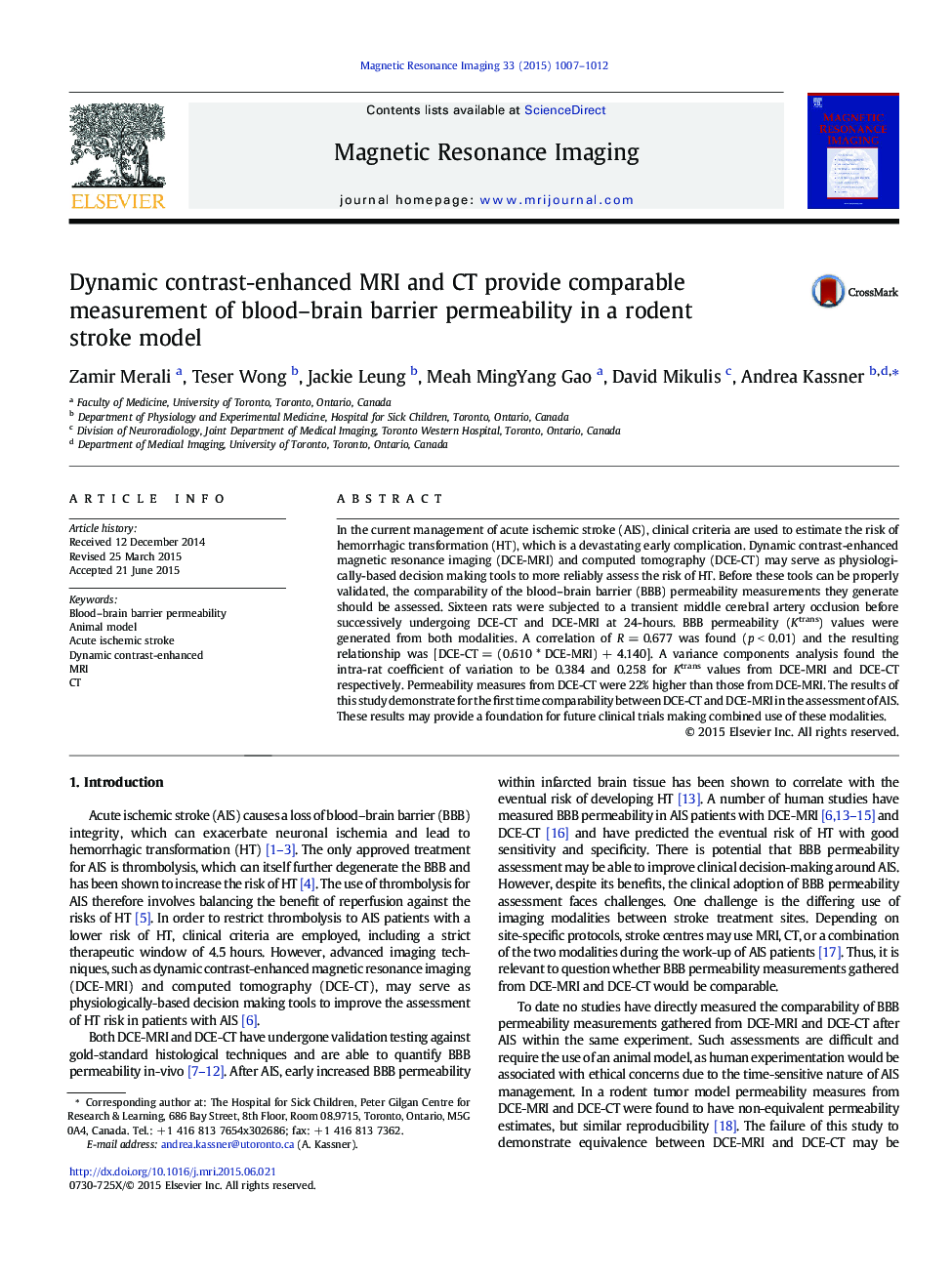| Article ID | Journal | Published Year | Pages | File Type |
|---|---|---|---|---|
| 1806182 | Magnetic Resonance Imaging | 2015 | 6 Pages |
In the current management of acute ischemic stroke (AIS), clinical criteria are used to estimate the risk of hemorrhagic transformation (HT), which is a devastating early complication. Dynamic contrast-enhanced magnetic resonance imaging (DCE-MRI) and computed tomography (DCE-CT) may serve as physiologically-based decision making tools to more reliably assess the risk of HT. Before these tools can be properly validated, the comparability of the blood–brain barrier (BBB) permeability measurements they generate should be assessed. Sixteen rats were subjected to a transient middle cerebral artery occlusion before successively undergoing DCE-CT and DCE-MRI at 24-hours. BBB permeability (Ktrans) values were generated from both modalities. A correlation of R = 0.677 was found (p < 0.01) and the resulting relationship was [DCE-CT = (0.610 * DCE-MRI) + 4.140]. A variance components analysis found the intra-rat coefficient of variation to be 0.384 and 0.258 for Ktrans values from DCE-MRI and DCE-CT respectively. Permeability measures from DCE-CT were 22% higher than those from DCE-MRI. The results of this study demonstrate for the first time comparability between DCE-CT and DCE-MRI in the assessment of AIS. These results may provide a foundation for future clinical trials making combined use of these modalities.
